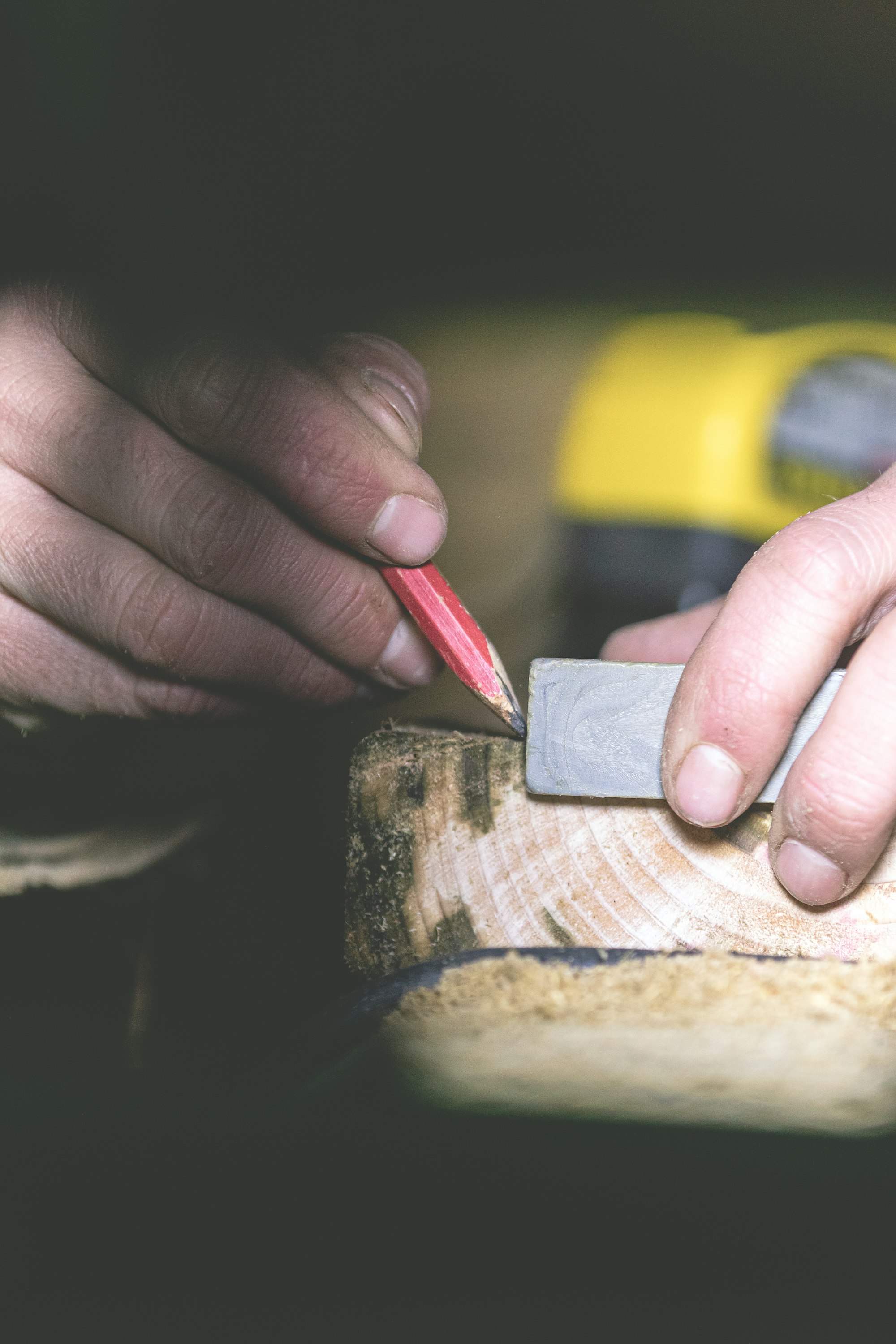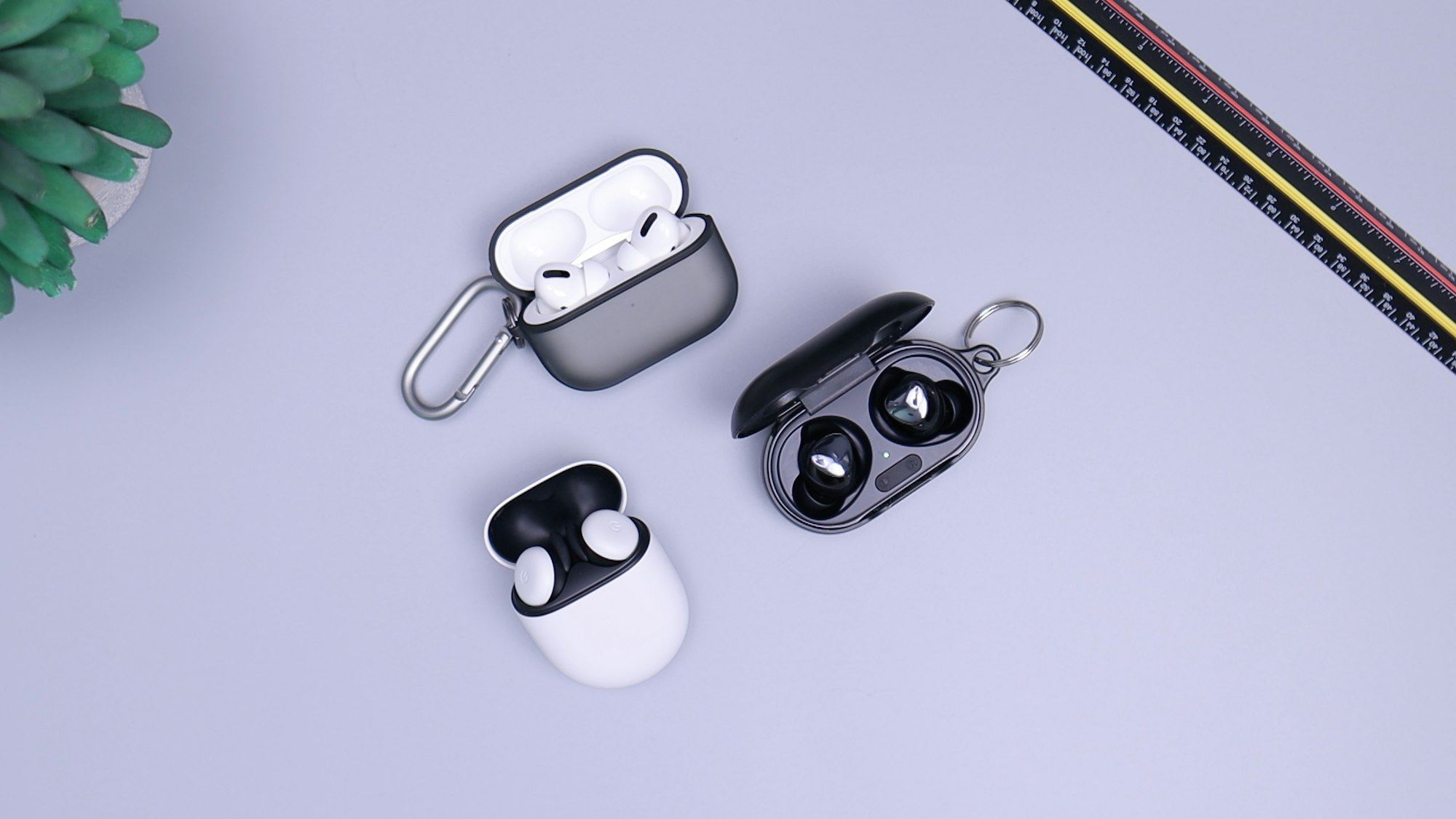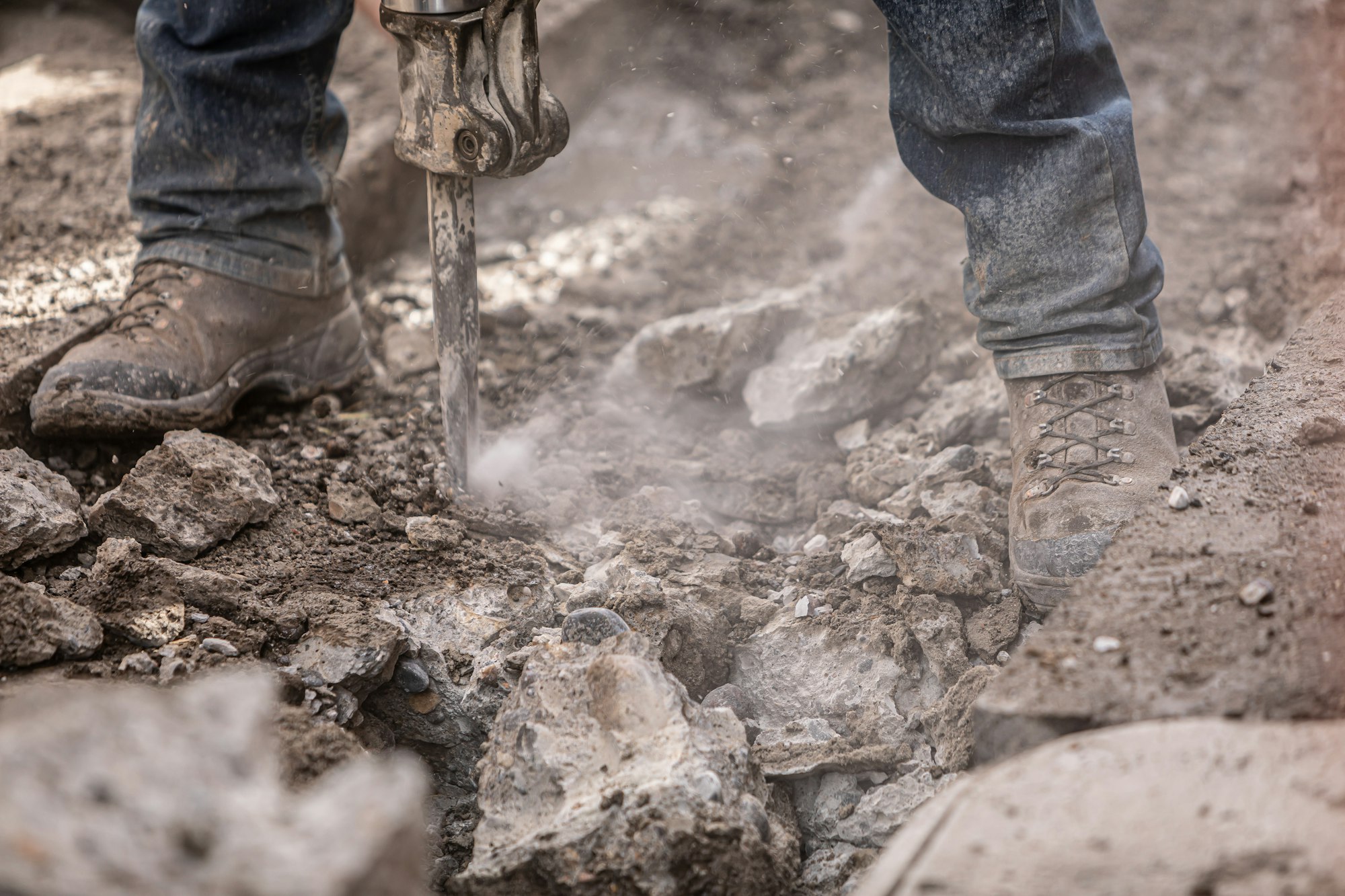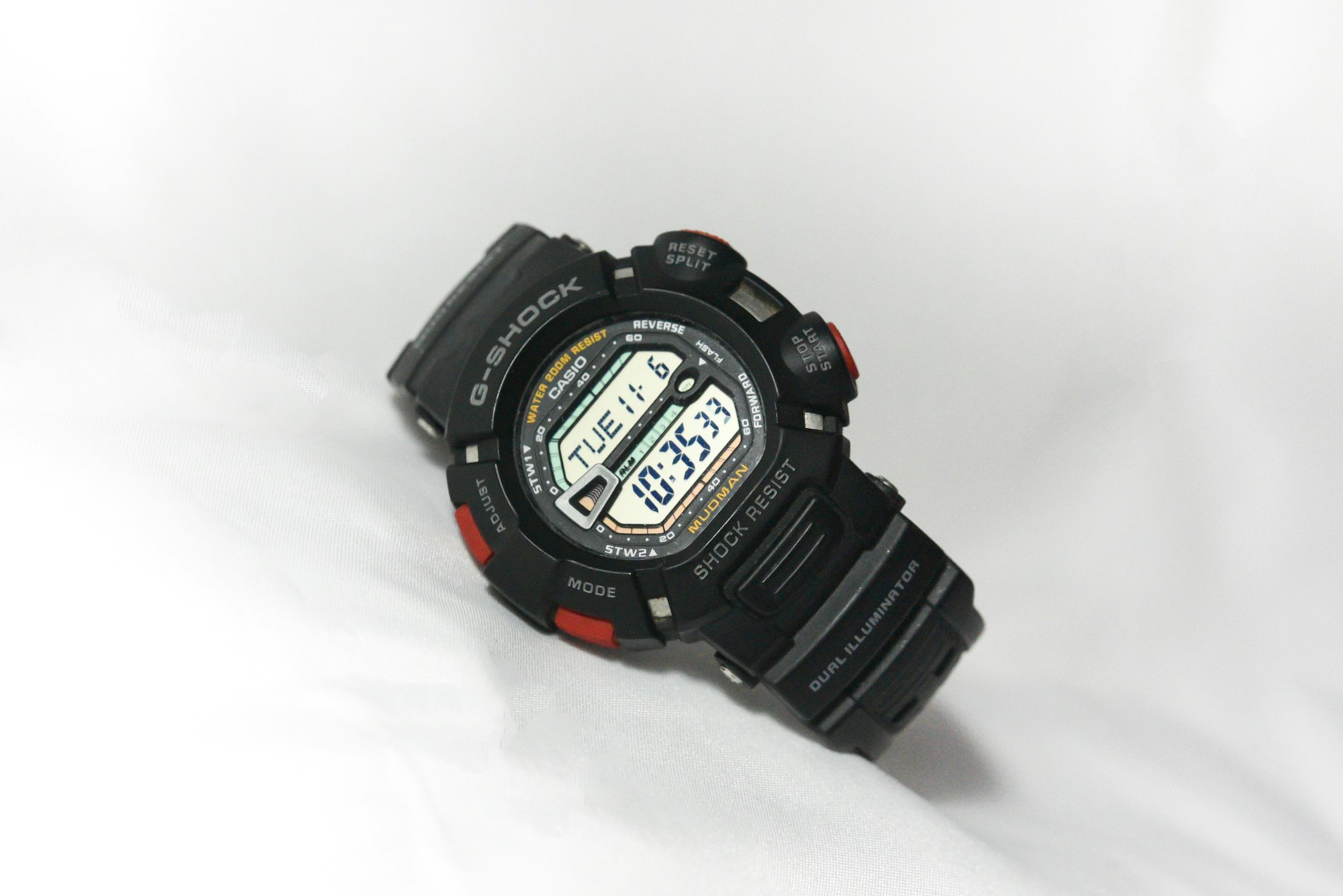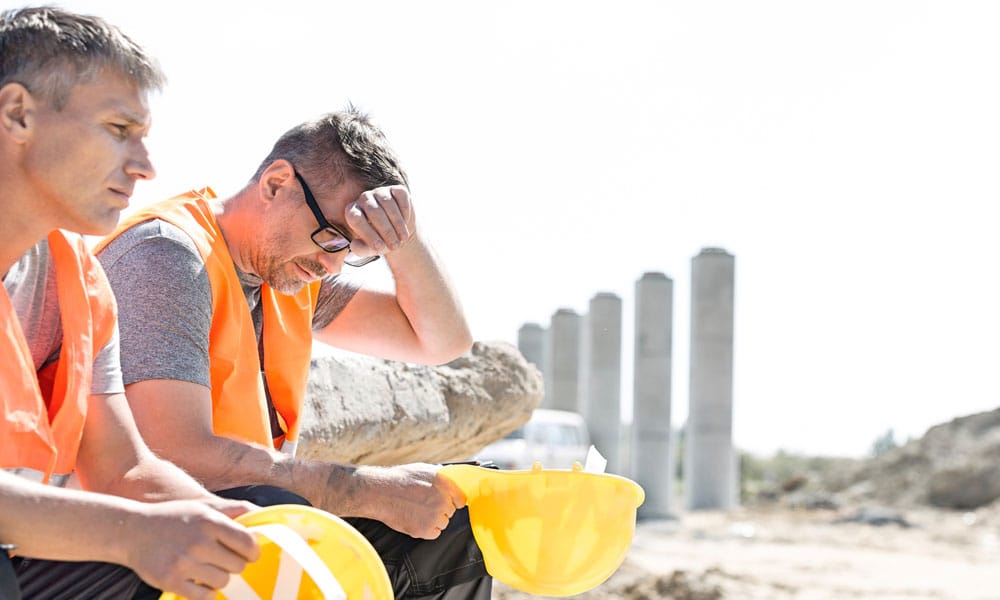You might think, “I’ve got my leather work gloves for rough materials, do I really need a special pair for winter?”
The answer is yes—
If you’re working during the colder temperatures of the winter months or in cold climates, you’ll need gloves designed to protect your hands from the elements.
Here’s when and where cold weather construction gloves are a must:
✅ Outdoor Work in Winter: If you’re building a home in the winter months, you’re battling freezing temperatures, wet weather, and possibly snow. Cold hands not only slow you down but also increase the risk of accidents when handling power tools or climbing ladders.
✅ Cold Storage Construction: Even in summer, some construction projects involve cold storage or refrigerated spaces. These environments can plunge below zero, requiring insulated gloves that keep your fingers warm and responsive.
✅ High-Altitude Sites: Working at high altitudes exposes you to direct sunlight during the day but biting cold in the mornings and evenings. Having good cold weather gloves with a snug fit and fleece cuffs can prevent frostbite and discomfort.
✅ Extreme Weather Events: Think wet weather in mild winters or sudden temperature drops. Being prepared with resistant gloves featuring waterproof membranes and good dexterity can make all the difference between a smooth workday and struggling with cold fingers.
Why does it matter?
In cold conditions, your hands lose heat faster, which affects blood flow, fine motor skills, and your ability to safely handle small items or operate machinery.
What Are the Best Cold Weather Construction Gloves in 2025?
Now that we know when and who needs cold weather construction gloves, let’s look at what’s making waves in 2025. The market is packed with options—from budget-friendly picks to expensive gloves packed with special features.
Here’s a roundup of some top choices:
🧤 Wells Lamont HydraHyde Leather Work Gloves
A solid favourite among construction workers, these gloves combine a leather glove exterior with a waterproof membrane that keeps hands dry in wet weather. The HydraHyde treatment makes them resistant to water, and the synthetic leather palm adds durability.

🧤 Mechanix Wear Winter Work Gloves
A staple for mechanics gloves and construction workers, these gloves offer a secure fit, abrasion resistance, and fleece liners. Some models even feature M Thinsulate or G Thinsulate insulation, balancing warmth with good dexterity.

🧤 Carhartt Cold Snap Insulated Gloves
Known for heavy-duty work, these gloves provide thick insulation, adjustable cuffs, and better grip in cold climates. The fleece cuffs keep the cold out while the outer shell resists water and wind.

🧤 Ironclad Cold Condition Waterproof Gloves
For those facing extreme cold and wet weather, these gloves are a top pick. They combine a waterproof membrane with synthetic materials that remain flexible even in freezing temps. Perfect for cold storage construction or cold conditions in winter builds.

🧤 Outdoor Research Flurry Sensors
Designed for outdoor enthusiasts, these gloves have crossed into the construction world for their comfortable fleece lining, breathable bladder, and touchscreen compatibility. They’re a good option for jobs requiring fine motor skills and frequent phone use.
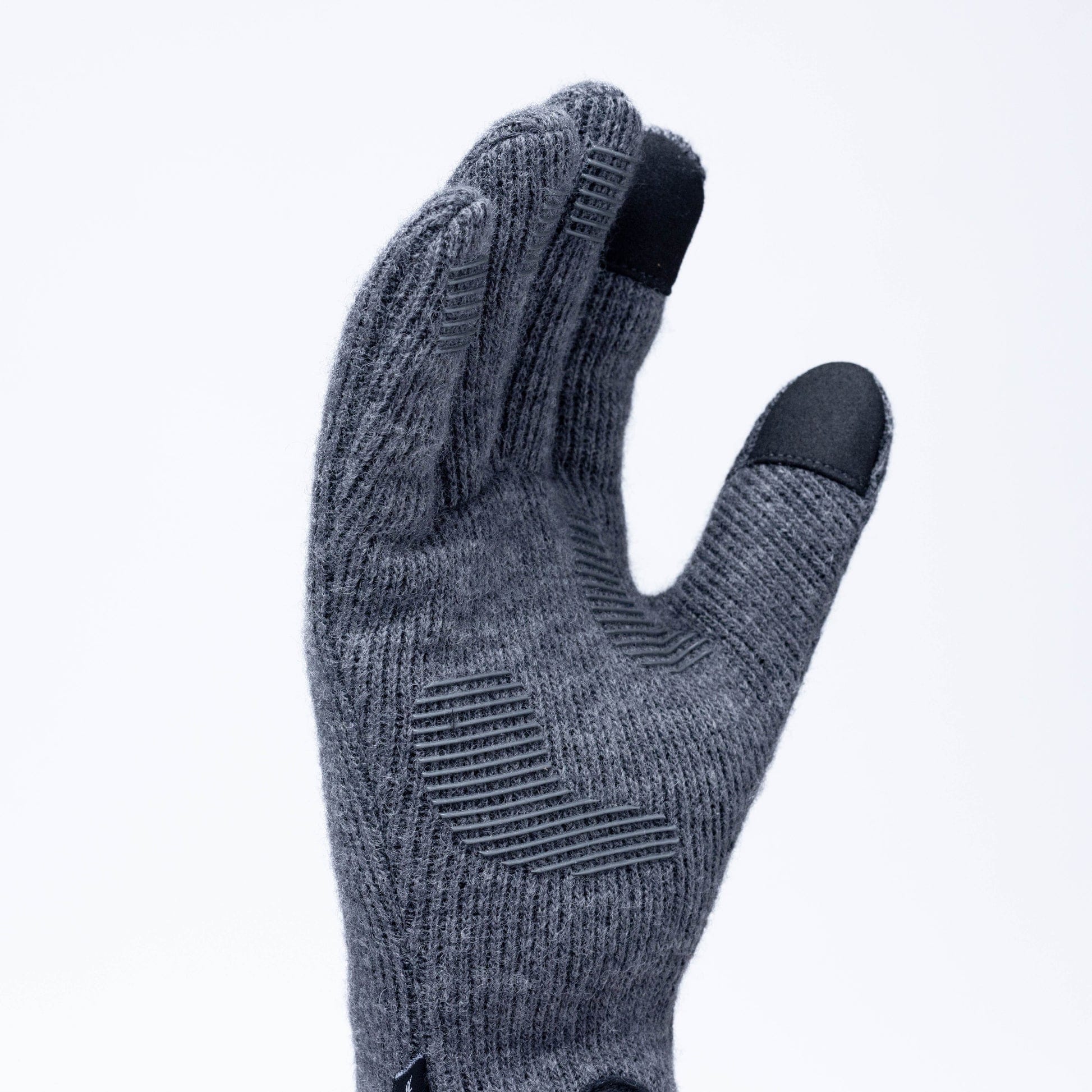
Key features to look for in the best cold weather construction gloves include:
✅ Thick insulation like M Thinsulate for warmth.
✅ Synthetic leather palms for durability and better grip.
✅ Touch-rite nib or key-rite nib for touchscreen use.
✅ Snug fit and elastic cuff to keep warmth in and cold out.
✅ Breathable bladder to reduce sweat build-up.
✅ Water resistance or waterproof membrane for wet conditions.
✅ High visibility glove designs for safety on busy sites.
Key Elements of Cold Weather Construction Gloves
Not all winter gloves are created equal, especially when it comes to construction work. Here’s what sets cold weather construction gloves apart from regular gloves you might grab for a winter walk or ski trip.
Knowing these elements will help you pick the right winter work gloves for your needs:
🧤 Outer Shell
The outer layer is what shields your hands from wind, water, and abrasions. Look for abrasion-resistant materials like leather, synthetic materials, or nylon shells that offer durability without sacrificing flexibility.
🧤 Insulation
Insulation is key in keeping your hands warm. Many top gloves use M Thinsulate or G Thinsulate to provide thick insulation that traps heat while maintaining good dexterity.
🧤 Waterproof Membrane
For jobs in wet weather or cold storage, a waterproof membrane like HydraHyde is crucial. This layer prevents water from seeping in while allowing moisture from sweat to escape—keeping hands dry and warm.
🧤 Glove Liner
Some gloves come with a built-in fleece liner or merino wool layer, while others let you add a separate liner glove for extra warmth. The liner’s job is to trap heat close to your skin and wick away moisture.
🧤 Cuffs and Closures
A snug fit around the wrist is vital for keeping cold air and snow out. Features like elastic cuffs, adjustable cuffs, or fleece cuffs provide a secure seal.
🧤 Dexterity and Grip
Being warm is great, but if you can’t hold a hammer or turn a screw, your gloves aren’t doing their job. Look for gloves with synthetic leather palms, better grip materials, and even touch-rite nibs or key-rite nibs for using touchscreens or handling small items.
🧤 Special Features
Modern cold weather gloves are packed with features to make tough jobs easier:
✅ High visibility glove colours for safety.
✅ Breathable bladder to reduce sweating.
✅ Touchscreen compatibility so you can use your phone or tablet without removing gloves.
✅ Flexible materials to maintain good dexterity even in cold conditions.
Who Uses Cold Weather Construction Gloves?
When you think of cold weather construction gloves, you might picture construction workers on a big commercial site. But they’re not the only ones who rely on these gloves.
If you’re a first-time customer working on your own home improvement or residential build, you might not realise how essential these gloves are for comfort and safety.
Here’s who typically uses them on construction sites:
👷 Residential Builders and Framers:
Whether building a house from scratch or adding an extension, framers and builders handle wood, nails, and steel, often in cold conditions. Without good winter gloves, handling these materials becomes tricky—and dangerous.
👷♂️ Roofers and Cladders Up on the roof:
Temperatures can feel even colder due to wind exposure. Warmest gloves with abrasion resistance and better grip make it easier to install roof tiles or cladding without risking dropped materials or frostbitten fingers.
👩🔧 Electricians and Plumbers Even indoors:
Unfinished homes can be icy cold during winter months. Fine motor skills are essential when wiring, connecting pipes, or installing fixtures. Gloves with a snug fit and good dexterity are crucial for gripping small items like wires or fasteners.
🧤 DIY Homeowners:
Yes, that’s you! Whether you're laying pavers, clearing snow from a construction site, or tackling a home improvement project, you’ll want comfortable gloves that combine warmth and dexterity.
🌡️ Cold Storage Workers and Outdoor Enthusiasts:
In certain cases, cold weather gloves are also used by those working in cold storage facilities or even by outdoor enthusiasts like hikers and campers. While not construction-specific, these environments demand similar heavy-duty protection and water resistance.
So, whether you’re an experienced construction worker or a homeowner on your first order of building materials:
Why Should You Use Cold Weather Construction Gloves?
So, why not just tough it out with regular leather work gloves or bare hands? When the temperature drops, cold weather construction gloves aren’t just about comfort—they’re about safety, productivity, and protecting your investment in your new home build.
Here’s why they matter:
✅ Keep Your Hands Warm and Functional
When your hands are exposed to cold conditions, your blood flow slows, and your fingers become stiff. This means you lose fine motor skills, which are crucial for gripping nails, screws, and other small items. Without good dexterity, even basic tasks become risky.
✅ Prevent Injuries and Accidents
Cold, stiff hands are more likely to fumble tools or materials. Imagine dropping a hammer or a piece of framing lumber because your hands are numb. Worse, losing control of power tools can result in serious injury. Cold weather gloves with a secure fit help maintain grip and control.
✅ Protect Against Weather and Moisture
Waterproof gloves with a waterproof membrane keep your hands dry, preventing the painful combination of cold and wetness. Dry, warm hands are also less likely to suffer from cracks, chapping, or even frostbite in extreme cold.
✅ Enhance Productivity and Comfort
Let’s face it: working with frozen fingers isn’t efficient. The warmest gloves not only protect you from cold hands but also keep you comfortable enough to work longer and more effectively, even in cold climates.
✅ Support for First-Time Builders
If you’re a first-time customer tackling your own build, investing in cold weather construction gloves is a good option. They help you handle the physical demands of the work while protecting your hands from harsh conditions.
Challenges of Using Cold Weather Construction Gloves
Even the best winter work gloves come with some challenges. While they’re essential for working in cold conditions, it’s important to be aware of potential downsides and how to address them.
🧤 Reduced Dexterity
The more insulation a glove has, the warmer it is—but also the bulkier. Thick insulation like M Thinsulate or G Thinsulate can reduce fine motor skills, making it harder to handle small items or perform detailed tasks like wiring or threading nails.
🧤 Fit and Comfort
A snug fit is vital, but some gloves can feel too tight, especially if you’re layering with a liner glove. On the flip side, bulky gloves can slip or shift, causing frustration when using power tools or managing home improvement projects.
🧤 Cost
High-quality gloves, such as those with synthetic leather palms, waterproof membranes, or special features like touch-rite nibs, can be pricey. First-time customers might hesitate at the price tag of an expensive glove, but the investment often pays off in warmth, comfort, and safety.
🧤 Sweating and Moisture
While a breathable bladder helps, some gloves trap moisture if your hands sweat, especially during active work. Wet liners can quickly turn a warm glove into a damp, uncomfortable one, potentially leading to cold fingers and cold hands.
🧤 Compatibility with Tools
Some gloves, even those designed for good dexterity, can interfere with certain tools—like triggering small buttons on power tools or handling fine motor adjustments. Look for touchscreen compatibility and well-designed synthetic materials that stay flexible.
Best Practices and Recommendations
Choosing and using cold weather construction gloves effectively isn’t just about buying the right pair of gloves—it’s about how you use and care for them to get the most out of your investment. Here are some best practices and recommendations for homeowners and construction workers alike:
🧤 Choose the Right Fit
A snug fit is key for warmth and safety, but not so tight that it restricts blood flow or feels uncomfortable. Test different sizes and consider if you’ll wear a liner glove underneath for extra insulation.
🧤 Select the Right Features for Your Job
- For cold storage or extreme temperatures, look for gloves with thick insulation and a waterproof membrane.
- If you’re handling small items or using power tools, opt for gloves with good dexterity, synthetic leather palms, and touchscreen compatibility.
- Consider high visibility glove options for safety on busy sites.
🧤 Layer Up Smartly
In extreme cold, consider using a liner glove with your main glove. For example, a merino wool liner under a heavy duty glove provides warmth without sacrificing too much dexterity.
🧤 Break Them In Before the Big Job
Wear your new gloves around the house or for home improvement tasks to soften them up. This helps prevent discomfort or cold grips when you’re on site.
🧤 Keep Them Dry and Clean
Wet gloves lose insulation power and can lead to cold fingers. After work, hang them to air dry in a warm spot. Avoid drying them in direct sunlight or with high heat, which can damage synthetic materials or shrink the fleece liner.
🧤 Replace Worn-Out Gloves
Even the best cold weather gloves wear out. Inspect them regularly for signs of damage, especially in the synthetic leather palm and seams. A ripped glove is no match for cold conditions.
🧤 Consider Your Budget
For first-time customers, it’s tempting to go for the cheapest option, but investing in good quality gloves will save you discomfort and potential injury. Look for deals with free shipping or bundle offers for bulk purchases.
Conclusion: Stay Warm, Stay Safe – The Power of the Right Gloves
As you can see, cold weather construction gloves aren’t just another item to tick off the shopping list—they’re an important part of your personal protective equipment for any construction site, especially when you’re dealing with cold conditions.
FAQs: Cold Weather Construction Gloves – What You Need to Know
Here are answers to some of the most common questions about cold weather construction gloves, aimed at helping both pros and first-time customers make smart decisions.
1. What’s the difference between cold weather construction gloves and regular work gloves?
Cold weather construction gloves are specifically designed for cold conditions. They use thick insulation like M Thinsulate, waterproof membranes, and snug fit designs to keep hands warm and functional. Regular work gloves don’t offer the same level of protection in cold climates.
2. How do I know which glove size is right for me?
Measure your hand’s circumference and length, then refer to the manufacturer’s sizing chart. A snug fit ensures warmth without restricting movement. Don’t forget to account for glove liners if you plan to wear them underneath.
3. Can I use touchscreen devices with cold weather gloves?
Yes! Many modern gloves include touch-rite nibs or key-rite nibs that let you operate phones or tablets without removing your gloves. Look for touchscreen compatibility as a feature when choosing gloves.
4. Are cold weather gloves waterproof?
Not all are fully waterproof, but many include a waterproof membrane or water-resistant outer shell to keep hands dry in wet weather. For extreme cold or cold storage, opt for gloves with a fully waterproof design.
5. What kind of insulation is best for cold weather gloves?
Look for gloves with M Thinsulate or G Thinsulate for warmth without excessive bulk. Merino wool liners can also add insulation and comfort.
6. How should I care for my cold weather construction gloves?
Air-dry your gloves after each use, avoiding direct sunlight or high heat. Brush off dirt and inspect for wear and tear. Store them in a cool, dry place to maintain durability and water resistance.
7. How long do cold weather gloves last?
With proper care, quality gloves can last multiple seasons. However, gloves used in extreme temperatures or for heavy-duty work may wear out faster, especially at high-use points like the synthetic leather palm.
8. Can I use ski gloves or general winter gloves for construction?
While men’s ski gloves or general winter gloves offer warmth, they typically lack the durability, abrasion resistance, and better grip needed for construction work. Stick with purpose-made cold weather construction gloves for safety.
9. Are high-visibility gloves really necessary?
For busy worksites or areas with low visibility, high visibility gloves help keep you safe by making your hand movements more noticeable to others.
10. Do I need different gloves for different temperatures?
Yes. Use lighter gloves with breathable bladders for mild winters, and switch to heavy-duty, fully insulated gloves for extreme cold. Layering with liner gloves can help fine-tune warmth and good dexterity.
Further Reading
